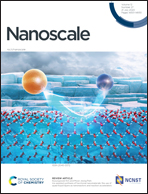A thermally and electrically dual-tunable absorber based on Dirac semimetal and strontium titanate
Abstract
In this paper, we proposed a bi-tunable terahertz (THz) metamaterial absorber based on bulk Dirac semimetal (BDS) and strontium titanate (STO). When the values of Fermi energy EF and temperature (T) are equal to 40 meV and 300 K, the simulation result shows that the absorption frequency is centered at 3.69 THz with nearly 100% absorption rates. Interestingly, by adjusting the Fermi energy EF of the BDS pattern from 10 to 80 meV, the peak absorptivity can be continuously tuned from 70% to 99.9%, and the absorption frequency point shifts from 3.265 to 4.82 THz. Meanwhile, when the temperature of the STO metamaterial changes from 200 to 300 K, the absorption frequency point can be dynamically controlled from 2.665 to 3.69 THz with a fixed amplitude. When Fermi energy EF of the BDS and temperature T of STO were varied, the relative impedances of the absorber were investigated. Furthermore, the electric field and power loss density distributions were also examined to further explain the related physical mechanism. Owing to its symmetrical structure, the proposed absorber demonstrates intensity polarization-independent characteristics and can maintain stable absorption with a large range of incident angles. The proposed absorber may be used in various devices such as detectors, selective heat emitters, and smart devices.



 Please wait while we load your content...
Please wait while we load your content...